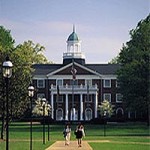 When it comes to student loans and bankruptcy, the news is typically grim all around. Student loans can’t be discharged through a typical Chapter 7 case, unless the debtor can prove they are an “undue hardship.” The procedure for claiming undue hardship involves filing suit against the lender and litigating with them; this will typically cost a lot of money, which people with undue hardships don’ t have . . . . and on and on it goes.
When it comes to student loans and bankruptcy, the news is typically grim all around. Student loans can’t be discharged through a typical Chapter 7 case, unless the debtor can prove they are an “undue hardship.” The procedure for claiming undue hardship involves filing suit against the lender and litigating with them; this will typically cost a lot of money, which people with undue hardships don’ t have . . . . and on and on it goes.
So the next question becomes, what is a student loan, anyway? On this subject, the Internet is full of bad advice, because it is quite common to see that only “federal” student loans are subject to the hardship rules. This, it turns out, isn’t true anymore. Private student loans are non-dischargeable was well; as I said, the news on this front is typically all bad!
The misunderstanding goes back to the changes to the bankruptcy code enacted in 2005 (which were mostly bad for consumers, anyway). A new definition of student loan was put in that includes “any other [non-governmental] education loan that is a qualified education loan, as defined in section 221(d)(1) of the federal tax code.”
Turning to the tax code “a qualified education loan” turns out to be any debt incurred by a taxpayer solely to pay “qualified education expenses”.
Qualified education expenses, in turn, are defined by yet other act, the Higher Education Act. They include tuition and fees, books, supplies, transportation, and personal expenses, room and board,
dependent care for children of the student, and telecommunication expenses.
So in the end, just about any private loan connected in any way with going to school will be treated as a non-dischargeable in bankruptcy. Not a very consumer friendly area of the bankruptcy code, I’m afraid!
By Doug Beaton
 Recently I published an article over on AVVO about how debtors trying to get themselves out of student loans through a bankruptcy filing soon find themselves caught in a Catch-22 situation. You can read it here.
Recently I published an article over on AVVO about how debtors trying to get themselves out of student loans through a bankruptcy filing soon find themselves caught in a Catch-22 situation. You can read it here.

